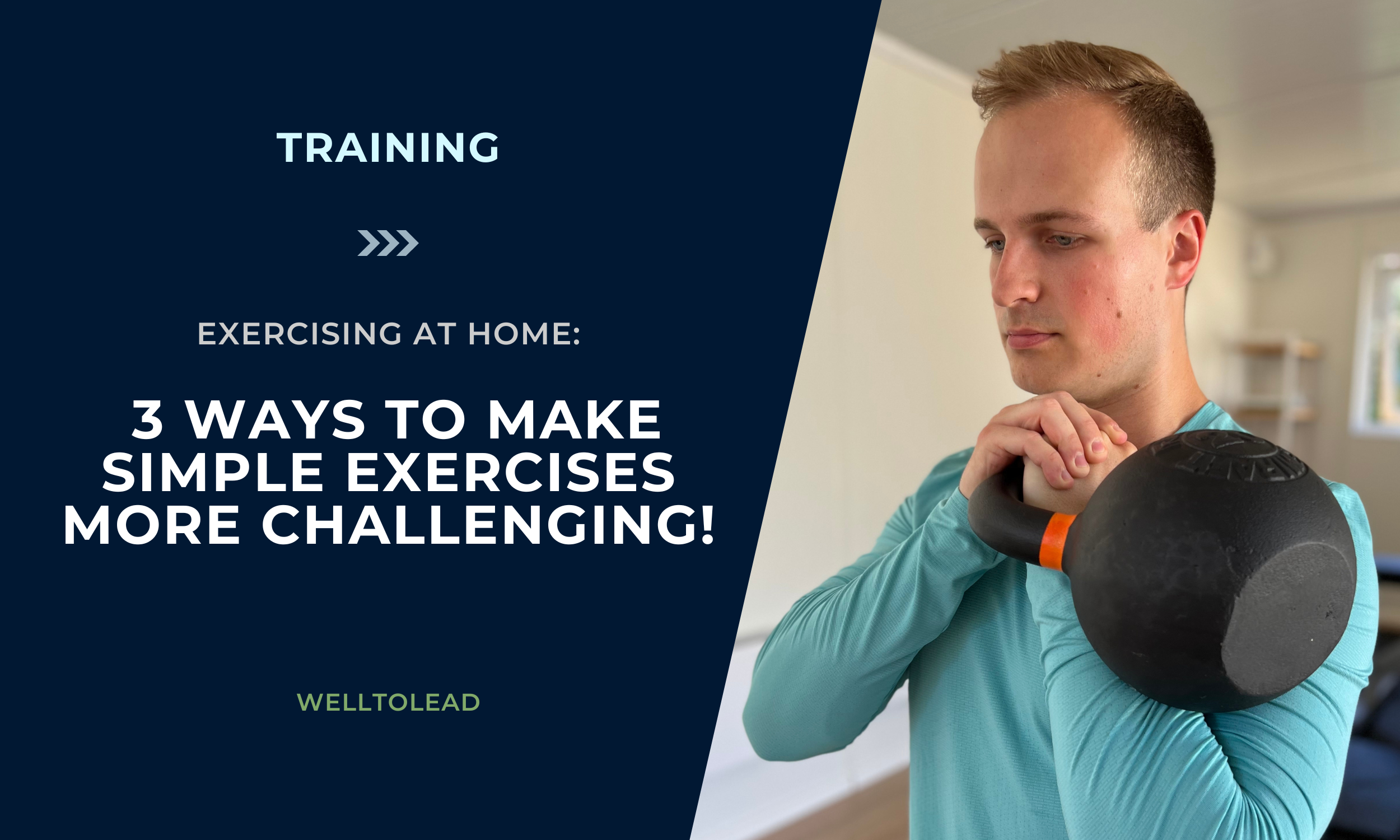Exercising at Home: 3 Ways to Make Exercises More Challenging
Working out at home carries a range of pros and cons. A more common difficulty I see with many of my clients, particularly during the lockdowns when exercising at home, was the ability to progress and make exercises more challenging without having to purchase heavier weights or even more bands.
In this article, I’m going to break down my top 3 methods of making straight-forward resistance exercises more challenging when you only have a single weight that you’ve gotten a touch too strong for!
TEMPO
Adjusting speed, specifically slowing down the tempo at which you perform an exercise is an excellent method of making a movement that’s seemingly relatively easy… pretty tough! What I mean by tempo is the time it takes you to perform each repetition.
Typically tempo will be written out as three numbers, 211 for example. If we were to take a squat as an example with this 211 tempo, it would be performed with 2-seconds on the descent, lowering into the squat, followed by a 1-second pause at the bottom and then a 1-second ascent as you stand back up again.
Tempo primarily makes exercises more challenging by increasing the time under tension. Our muscles are having to work for longer on each repetition to create and control the movement, similarly, slowing down the tempo of an exercise requires more focus and mental energy, increasing fatigue more globally.
However, it’s important to be aware that by slowing down the reps of a weighted exercise you’re likely creating greater muscle damage and therefore an increased likelihood of some soreness for the day or two following the session. This isn’t necessarily a bad thing, just something to be aware of when planning your weekly exercise routine.
SUPERSETS
Pairing two exercises together, known as a superset, is a really common method used in many exercise programmes, and there’s also a host of benefits to integrating supersets into your workouts! For me, it’s the ability to increase the density of a session within a given time period, building greater work capacity and maintaining an elevated heart rate throughout.
A common approach I love to use with many of my clients, particularly with home training is what’s called an antagonistic superset. This is essentially pairing two exercises together that target opposing muscle groups.
For example, a push exercise with a pull exercise such as a push-up with a TRX row, or perhaps a quad dominant exercise such as a heels elevated squat paired with a hamstring dominant exercise like a swiss ball hamstring curl.
This antagonistic superset approach works excellently for shorter workouts as it enables you to get much more work done within the given time period. If we take the push-up and row example mentioned above, whilst we perform the TRX row, our chest and tricep muscles used in the push-ups are given time to rest and vice versa, allowing us to take a minimal rest period in between sets. Therefore, shortening the length of each exercise and allowing us to get more done in the workout.
LOADING VARIATIONS
There are a variety of ways you can add load to an exercise. Each variation will challenge you slightly differently and therefore can play an important role in progressing specific movements. If we take a static lunge for example, where we hold the dumbbell or kettlebell during this exercise will alter the difficulty as it’ll introduce a wider variety of active muscles into the movement and challenge our balance, proprioception and focus.
For example, holding a single kettlebell in your hand outside of the front leg will further challenge your glute medius to keep your pelvis stable and resist a hip shift. Moreover, this unilaterally loaded position will challenge your core muscles differently as they work hard to resist flexing laterally.
A few examples of loading variations I use with many of my clients when exercising at home include the lunge mentioned above, a unilateral (single arm) kettlebell deadlift and a banded kettlebell single arm row.
I hope you found this article useful! I’d love to know which exercises you’re going to make more challenging during your home workouts going forwards @olliethompsonhealth
